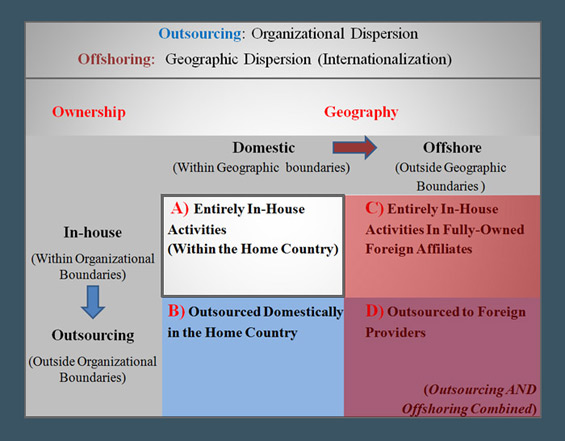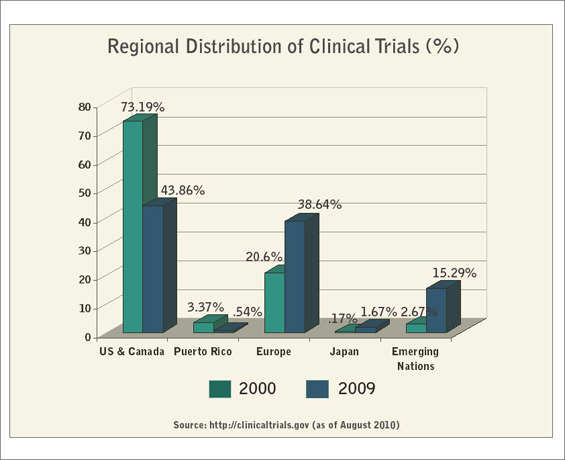Global “Chop Shops”: Slice, Dice and Outsource
Global “Chop Shops”: Slice, Dice and Outsource

NEWARK: Recently New York Senator Charles Schumer raised ire by calling Indian outsourcing companies “chop shops,” yet he unwittingly offered an accurate description of how economies are being integrated. He probably meant to say “body shop” – shopping for workers around the world who offer services under temporary visas. A “chop shop,” on the other hand, refers to an operation that dismantles cars, sometimes stolen, then sells the individual parts for profit – with the value of components greater than the assembled product.
The restructuring of some modern companies resembles “chop shops,” as the value chain is chopped into fine slices and distributed worldwide, and employees are relocated and reduced. Older firms in wealthy nations face competition from low-wage countries and downward price pressures so severe that the high payrolls in the US or elsewhere can no longer be sustained.
The trend is apparent in manufacturing, computers and architecture, but is spreading to other industries like biopharmaceuticals.

The announcements of such initiatives are similar to Johnson & Johnson’s in November 2009: “…to increase its operational efficiency and generate annualized, pre-tax cost savings of $1.4-$1.7 billion when fully implemented in 2011…” Rather than relocate the entire production lock-stock-and-barrel to India or China, which a few firms have done, managers look for parts of the operation to relocate, offshore or outsource, while keeping critical parts in-house and at home. (See Figure 1 for the categories).
Embracing the chop-shop model, the “big-pharma” industry is slated to shed more than 100,000 jobs in advanced economies.
Operations considered the “core competence” of the firm – processes using proprietary technology, R&D that could be leaked to competitors – were once considered sacrosanct, not to be outsourced or offshored. But no more – pressures for efficiency extend even to the R&D portion of the value chain, no longer treated as a monolithic block and now amenable to “chopping” and dispersal.
Until a decade ago, if offshoring or outsourcing were undertaken, entire major portions of the value chain would be relocated abroad. While the majority of Western firms still retain R&D at home, the pharmaceutical industry is willing to “slice” R&D operations more finely, spreading them around the globe. Besides cost savings, foreign researchers and technicians are a source of innovation.
Despite R&D/Sales ratios already over 13 percent, many pharmaceutical firms face a “dry pipeline,” with few new products headed to market. Certification processes are more stringent worldwide.
Hence many companies desperately search for lower costs and speed in R&D by outsourcing and offshoring. Pharmaceutical R&D includes highly skilled scientific endeavors such as molecular sensing, virtual 3-D screening and genomics such as proteomics. Moreover such high-level expertise requires personnel not abundant outside rich nations.
Other aspects of R&D are mundane and less sensitive. Figure 2 illustrates how R&D in the biopharmaceutical sector can be chopped into at least 18 pieces which are then distributed worldwide.

R&D activities critical to ongoing competitiveness of the firm – such as genetics, Phase 0 and Phase 1 clinical trials, or the analysis of test data for risk factors and regulatory filings – continue to be done in the company’s headquarters nation. On the other hand, codified and routine portions of the R&D value chain, such as IT work, or the reporting of field clinical trial and sales data, can today safely be handled by outsource contractors in nations like India, Bulgaria and China.
Other components, or slices, of the chopped value chain, such as exploration and screening of compounds, in-vitro and in-vivo testing, assembly of data and documentation for various nations’ regulatory agencies, are activities that can be conducted jointly with foreign subsidiaries or with outsource providers both home and abroad.
The shift has already begun in the global dispersal of clinical trials, which account for 42 percent of overall pharma R&D costs. Phase 3 trials are today increasingly conducted outside the headquarters nation of the pharmaceutical company, by a combination of its foreign subsidiaries and contract providers, working from a standard “template” distributed to hospitals and clinics worldwide.
Trials conducted in the US and Canada show a remarkable decline, with the greatest rate of increase in emerging nations (see Figure 3).

Companies must decide how far to go in “fine-slicing” themselves. By separating out particular operations where the company is least efficient and allocating them to external providers who are proficient at those particular tasks, the firm enjoys lower overall costs and may also gain additional benefits in terms of creative external ideas and foreign market goodwill.
But the finer a company is chopped, with a larger number of slices, entails greater coordination, overhead and transportation costs as operations are geographically and organizationally dispersed. If a firm is chopped into too many slices, the overall increase in costs may be greater than the incremental benefits of disaggregation. Hence each firm must figure out for itself its optimal degree of disaggregation.
One salient economic fact remains that companies today are micro-dissecting themselves into finer and more slices than ever before – because of improvements in transactional efficiencies in dealing with external providers, greater codification of corporate knowledge in templates, procedures and software that can be shared with external agents, a somewhat reduced fear of technology misappropriation because of better intellectual property enforcement worldwide, improvements in the technical capacity of personnel in emerging nations, and the rise of emerging countries as large markets in their own right.
Behind Johnson & Johnson’s “global restructuring initiative” is the loss of many thousands of jobs in New Jersey and the US, and that’s only one example.
The fundamental restructuring of the global economy underway does not necessarily mean the loss of competitiveness for multinational companies based in advanced nations. By retaining, and nurturing key components of their business – for example by pharmaceutical firms focusing on high-level areas like genetics, molecular sensing, virtual screening, data architecture and certification expertise, while externalizing or relocating other slices to other countries, the firm can improve its overall competitive posture.
A flexible economy is a more creative economy. Jobs that are outsourced can be replaced by creative new and well-paying jobs, and where whole new industries can germinate and flourish.
Johnson & Johnson, by chopping itself, will end up more efficient, perhaps with fewer employees in the US. But other new jobs elsewhere in the US will be created. As routine, codifiable functions in biopharmaceutical R&D are offshored, the sector can intensify its focus on advanced genomics research.
This explains new jobs in companies like GE Healthcare, which produces medical imaging and molecular-level sensing equipment. There’s a direct correlation between the offshoring of routinized R&D operations in pharma R&D, a consequent greater focus on genomics research in advanced nations, and the rise of GE Healthcare, which has doubled its employment in the past decade. Today GE Healthcare is a $17 billion company with 46,000 highly skilled, well-reimbursed employees. By redefining its core competence as the ability to sense and manipulate at the molecular level, Applied Materials, a semiconductor foundry equipment supplier, branched out into new areas such as photovoltaic solar panels and flat-screen displays.
Overall, this fine chopping of companies reallocates the more mundane and routinized jobs internationally. Gains from this economic efficiency allows higher-level new jobs and industries to grow in advanced nations. Some individual careers are disrupted, but this dynamic and virtuous cycle ultimately leads to a more efficiently performing global economy.
Comments
Thanks